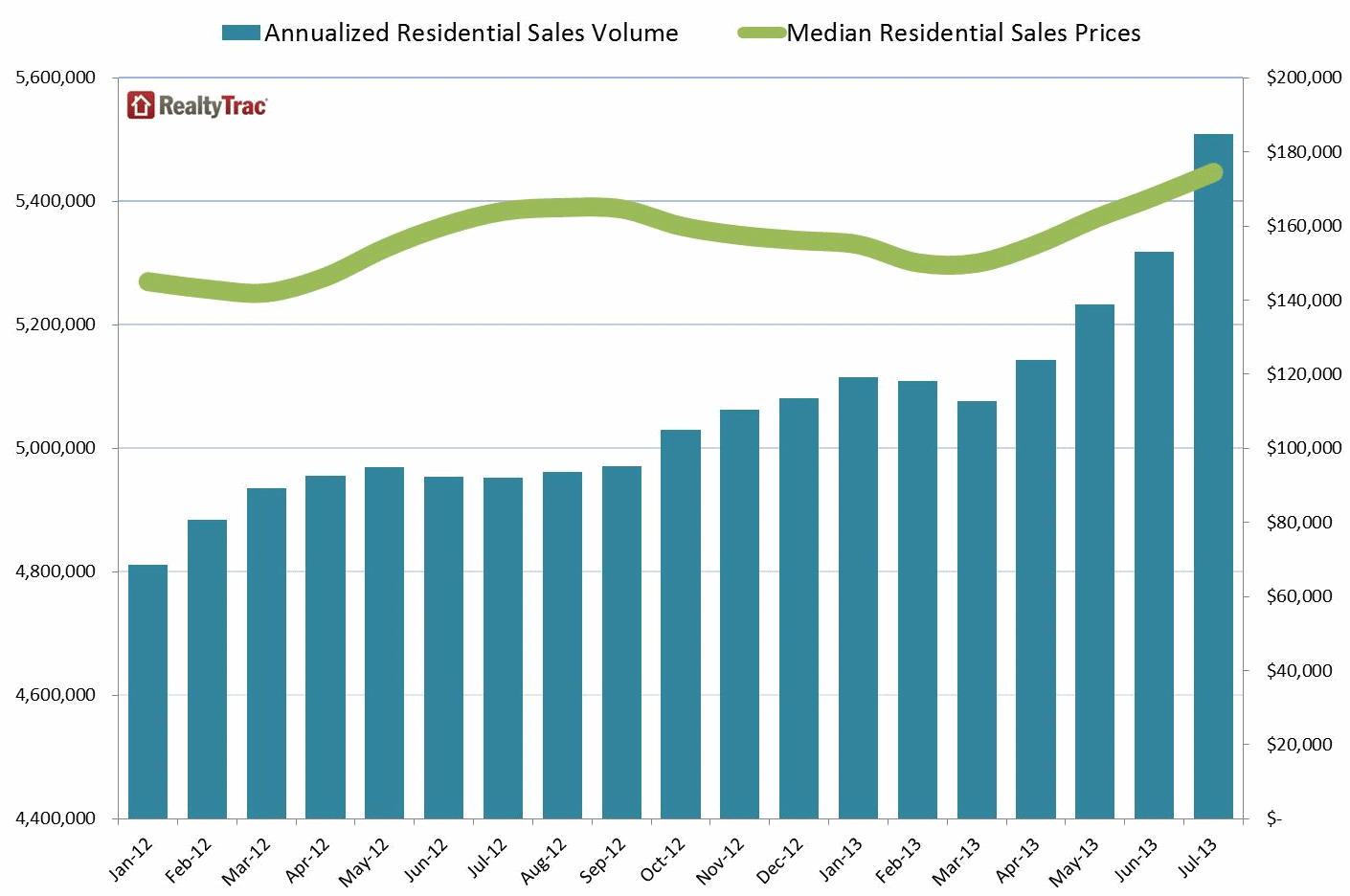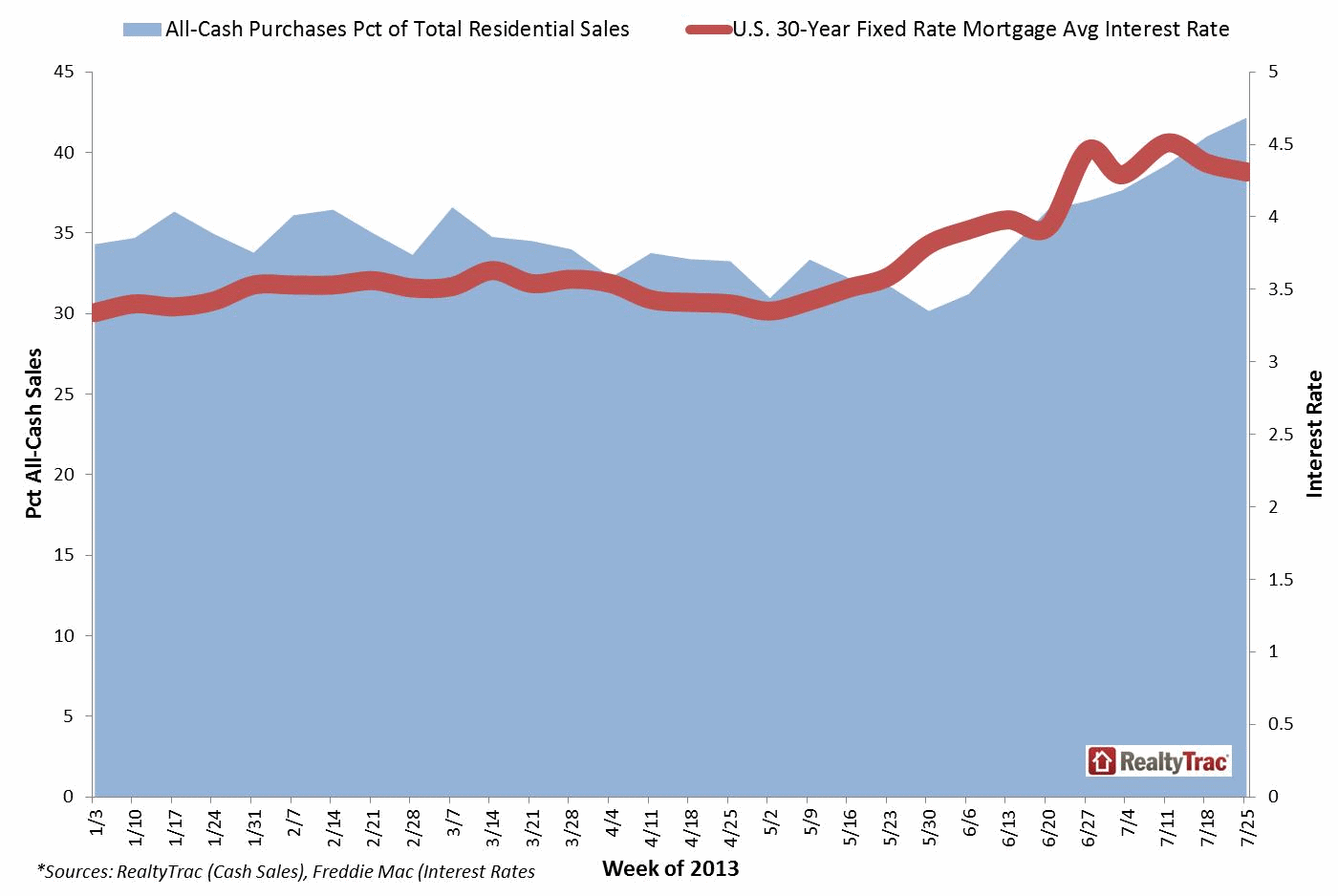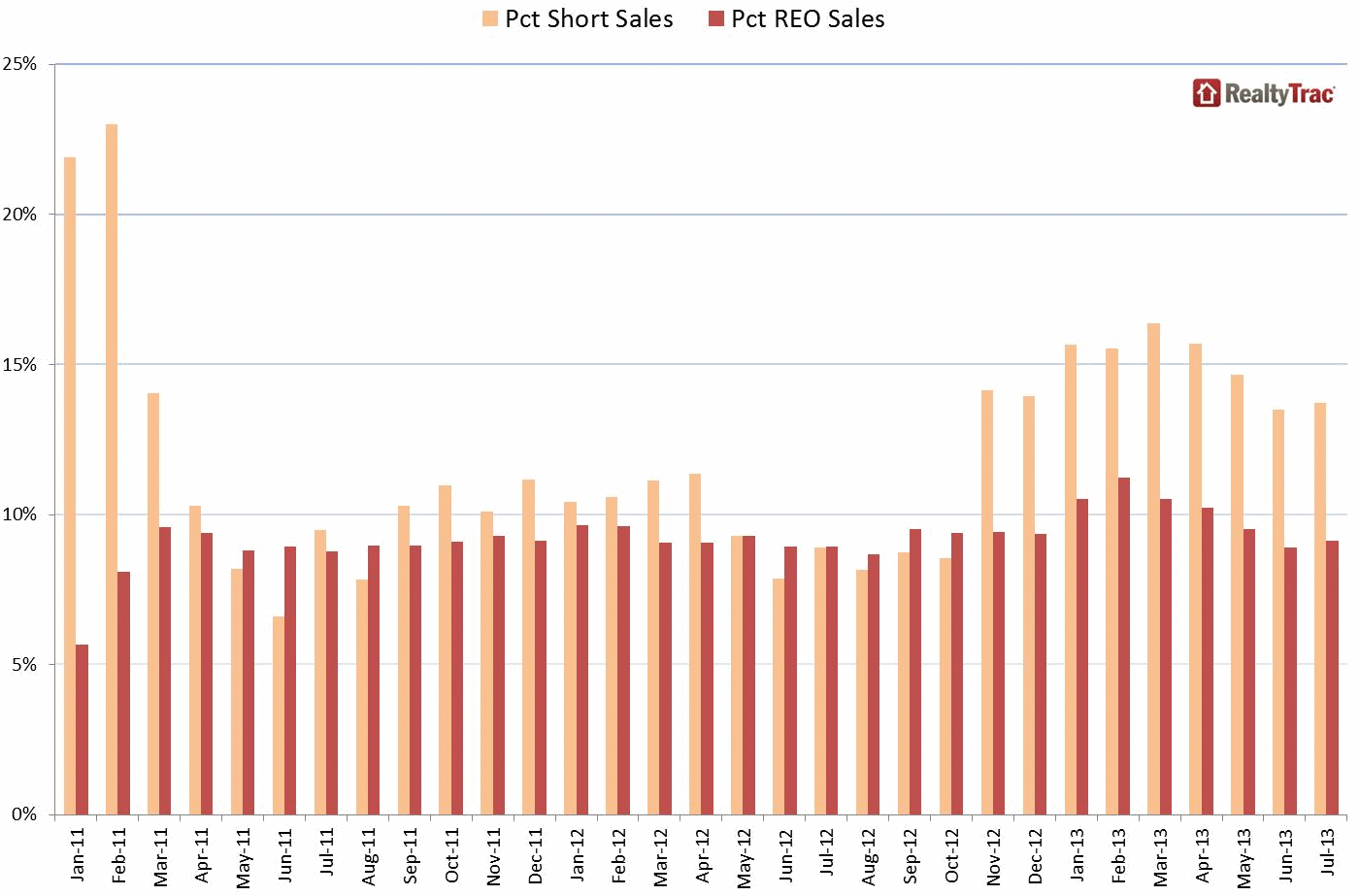RealtyTrac, which has historically reported on the distressed home market, has now widened the focus of its U.S. Residential and Foreclosure Sales Report to a more general discussion of the national real estate market. The company reports that homes in the U.S. sold at an estimated annualized rate of 5.5 million units in July, a 4 percent increase from the previous month and 11 percent higher than in July 2012. The year-over-year increase in sales was the largest so far this year.
Of particular note in the RealtyTrac report was data on cash sales. The company found cash transactions accounted for 40 percent of all sales in July compared to 35 percent in June and 31 percent in July 2012. There were especially notable month-over-month increases in cash sales in some cities; Dallas was up 82 percent, St. Louis 66 percent and Los Angeles 32 percent.
The national median sales price was $174,500 in July, a 4 percent increase from June and 6 percent from the previous year. July marked the 16th consecutive month median home prices have increased. The median price of a foreclosed home was discounted 37 percent from the median price of a non-distressed sale to $120,000, 1 percent above the June median but down 1 percent from a year earlier.

While sales volume continued to increase nationwide, eight states posted annual decreases in total sales, including California (-17 percent), Arizona (-11 percent), Nevada (-7 percent), and Georgia (-2 percent). Those four states also posted the four biggest annual increases in median home prices in July: California (+31 percent); Nevada (+27 percent); Arizona (+21 percent); and Georgia (+20 percent).
"Low inventory of homes available for sale is proving to be a double-edged sword in many local housing markets that have bounced back quickly from the real estate slump," said Daren Blomquist, vice president at RealtyTrac. "Home prices are accelerating rapidly in these markets thanks to the combination of low supply and strong demand. However, counter to the national trend, sales volume in these markets is down even as the percentage of cash sales rises, indicating there is still strong demand but that buyers who need financing to purchase are increasingly left out in the cold.
"The recent uptick in interest rates could also be contributing to a higher percentage of cash purchases as some non-cash buyers can no longer afford to buy, particularly in high-priced markets," Blomquist added.

Sales of distressed properties continue to hold a significant share of the market. Short sales accounted for 14 percent of all residential sales in July, up from 13 percent in June and from 9 percent in July 2012 while sales of bank-owned properties (REO) accounted for 9 percent of sales, the same percentage as both the previous month and a year ago.

Institutional investor purchases (sales to non-lending entities that purchased at least 10 properties in the last 12 months) also accounted for 9 percent of all residential sales in July, a percentage that was also unchanged from both the previous month and the same month in 2012. Institutional investors were particularly active in Atlanta where they accounted for 25 percent of sales, Tampa (22 percent), Palm Bay, Florida. (20 percent); Greenville, South Carolina, (19 percent); and Charlotte, (19 percent).







